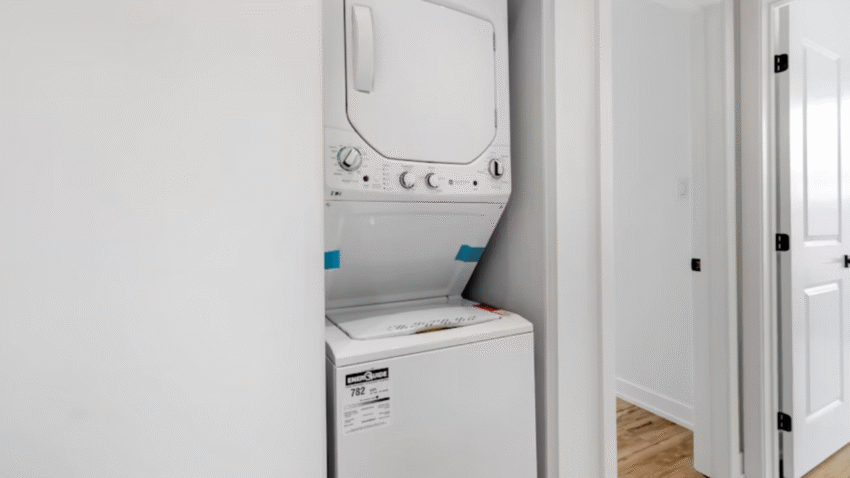Introduction
A top load washer may be great at handling large loads of laundry, but over time it can collect dirt, detergent residue, fabric softener buildup, and even mold. If you’ve noticed your clothes aren’t smelling as fresh as they used to—or your washer has developed an unpleasant odor—it’s probably time for a deep clean. This guide will walk you through how to deep clean a top load washer step by step, using affordable, safe, and effective methods to restore your machine’s performance and freshness.
Why Deep Cleaning Your Top Load Washer Matters
Washing machines are constantly exposed to dirt, sweat, detergent, and fabric softener, which can lead to:
- Odors: Trapped moisture and residue cause musty smells.
- Poor Cleaning Performance: Soap scum buildup reduces wash quality.
- Bacteria and Mold Growth: Warm, damp environments encourage microbial growth.
- Shortened Lifespan: Neglecting maintenance can cause damage to internal parts.
By deep cleaning your top load washer regularly, you’ll:
- Keep laundry smelling fresh.
- Improve machine efficiency.
- Avoid costly repairs and breakdowns.
Step-by-Step Guide to Deep Cleaning a Top Load Washer
1. Gather Your Supplies
You’ll need:
- White vinegar (kills bacteria and dissolves buildup)
- Baking soda (neutralizes odors and gently scrubs)
- Microfiber cloth
- Old toothbrush (for tight spots)
- Bucket or small bowl
2. Clean the Detergent and Fabric Softener Dispensers
These parts can accumulate sticky residue that causes odors.
How to clean them:
- Remove the dispensers if possible.
- Soak them in a bucket of warm water mixed with 1 cup of vinegar for 15–20 minutes.
- Scrub with an old toothbrush to remove buildup.
- Rinse and dry before putting them back.
3. Wipe Down the Lid and Rim
The underside of the lid and the rim around the drum often collect lint, detergent splashes, and grime.
How to clean them:
- Dip a microfiber cloth in a vinegar-water solution (50/50).
- Wipe all around the rim and lid, including hinges.
- Use the toothbrush for stubborn spots or tight crevices.
4. Run a Hot Vinegar Cycle
This cycle cleans the drum and internal parts naturally.
How to do it:
- Set the washer to the largest load size and hottest water temperature.
- Add 4 cups of white vinegar directly to the drum (not the dispenser).
- Let the machine fill with water and agitate for a minute to mix.
- Stop the cycle and let the vinegar water sit for 1 hour to break down residue.
- After an hour, restart the cycle and let it finish completely.
5. Run a Baking Soda Cycle
Baking soda removes remaining odors and provides a gentle scrub.
How to do it:
- Set the washer to the same settings as before (hot water, largest load).
- Add 1 cup of baking soda directly to the drum.
- Run the full cycle without pausing.
6. Scrub the Agitator (if applicable)
If your washer has a central agitator, it can trap lint and residue.
How to clean it:
- Use a toothbrush dipped in vinegar to scrub around the base and fins.
- Wipe with a microfiber cloth to remove loosened debris.
7. Clean the Filter (if your washer has one)
Some top loaders have a lint filter that needs occasional cleaning.
How to clean it:
- Check your manual to locate the filter (often inside the drum or under the agitator).
- Remove and rinse under warm water.
- Scrub with a toothbrush if needed and replace securely.
8. Wipe Down the Exterior
Finish your deep clean by wiping the outside of the machine.
How to do it:
- Use a vinegar-water solution on a microfiber cloth.
- Wipe the control panel, sides, and front of the machine.
- Dry with a clean cloth to prevent water spots.
Common Mistakes to Avoid
- Using Too Much Detergent
- Mistake: Overuse causes residue buildup in the drum and hoses.
- Solution: Follow the detergent manufacturer’s guidelines.
- Skipping the Lid Area
- Mistake: Ignoring the underside of the lid lets grime accumulate.
- Solution: Wipe it regularly with a vinegar-water cloth.
- Closing the Lid Immediately After Use
- Mistake: Traps moisture, encouraging mold growth.
- Solution: Leave the lid open to allow airflow and drying.
- Waiting Too Long Between Cleanings
- Mistake: Buildup becomes harder to remove.
- Solution: Deep clean every 1–2 months, depending on usage.
- Using Harsh Chemicals
- Mistake: Can damage internal components.
- Solution: Stick to safe, natural cleaners like vinegar and baking soda.
Extra Laundry Tips & Hacks
- Quick Freshen Between Deep Cleans: Run a short hot cycle with 1 cup vinegar monthly.
- Dry the Drum After Each Use: Use a clean cloth to remove leftover moisture.
- Check Hoses Regularly: Ensure there are no leaks or clogs affecting performance.
If you want more washer care tips, check out our “How to Remove Bad Odors from a Washing Machine” guide for extra freshness ideas.
Conclusion
Learning how to deep clean a top load washer step by step ensures your laundry comes out smelling fresh, your machine works efficiently, and you prevent costly repairs. With just vinegar, baking soda, and a few simple tools, you can restore your washer’s performance in under two hours.
Pro Tip: Make deep cleaning part of your regular laundry schedule—mark your calendar once every 6–8 weeks for the best results.
Bookmark this guide so you can follow these steps anytime your washer needs a refresh.
